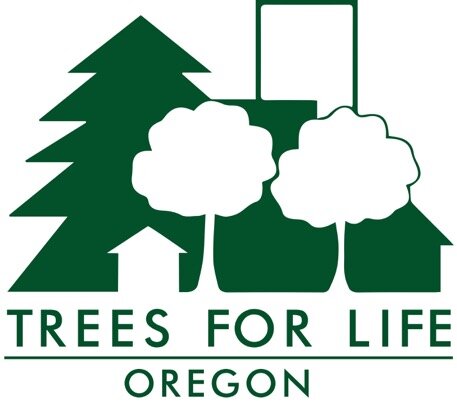Loss of Narrow Planting Strip Trees Will Add to Canopy Decline
Portland resident Meg Merrick recently noticed that no trees were planted in front of a new “skinny” house development in the part of her SE neighborhood with the most new construction. Alarmed that this area could lose most of its tree canopy over time, she checked with the City’s Bureau of Development Services about why no trees were planted in the ROW (right-of-way) planting strip. That’s when she learned that City code does not allow developers or homeowners to plant street trees in planting strips less than 3-feet wide.
Most residents would leave it at that, but Merrick is a retired Ph.D geographer previously at Portland State University. She used her GIS mapping skills to figure out how big a threat these narrow planting strips are to Portland’s canopy. Finding that GIS data specifically for narrow planting strips doesn’t exist, she developed a proxy for narrow planting strips by using the City’s street tree inventory data on site width and sidewalks and mapped that data together with the Portland Bureau of Transportation’s Equity Index’s GIS layer.
What she discovered was alarming. At risk are 14,274 street trees in such strips. Further, as seen in the map she created and shared with TFLO showing the location of Portland’s less-than-3-foot planting strips, the most heavily impacted areas tend to coincide with disadvantaged neighborhoods as identified by PBOT’s Equity Index.
(To zoom in on the map, click on it below.)
Merrick’s analysis shows that areas with the largest numbers of trees in less-than-3-foot strips are King (1,265), Piedmont (1,194), Woodlawn (951), Sabin (802), and Montavilla (674).
Many low-income neighborhoods are already at risk of canopy loss from yard trees removed from development sites because City code does not adequately protect private-property trees. Merrick’s findings indicate that because of the high presence of less-than-3-foot planting strips in these same areas, they are also at risk of losing public street trees, which the City owns and generally protects.
It’s important to note, she says, that the narrow strips were identified in the tree inventory by the trees in them. This means that the trees that still exist today, some years after the inventory, could already be gone or are at risk of being permanently removed by new development. The map shows “a significant number of disadvantaged neighborhoods where nearly every street has narrow strips,” says Merrick. “Currently, there are a large number of trees in these strips but with new development and with the City’s current prohibition to plant trees there, these areas will be radically changed.”
Even more disturbing is what Merrick found once she broadened her analysis to include trees in only slightly bigger strips, that is, 3-foot-wide planting strips. Taken together, trees in less-than-3-foot strips and those in 3-foot strips total 19,960, which is 5,686 more than those potentially lost in the first group alone. Under this wider assumption, the top four neighborhoods that stand to lose the most trees remain the same—King (a jump in loss from 1,265 to 1,491 trees), Piedmont (1,194 to 1,318), Woodlawn (951 to 1,015), and Sabin (802 to 923). See here for Merrick’s breakdown by neighborhood.
Both 3-foot and less-than-3-foot strips are too narrow to hold anything but the smallest size trees at maturity, and even small trees can do damage if they outgrow the strip, forcing adjacent property owners to foot the bill for new sidewalks. Moreover, harsher conditions due to climate change will mean those trees die sooner.
Rather than advocate for Portland to permit street trees to be squeezed into narrow strips, Merrick’s recommendations echo Trees for Life Oregon’s. Why, she asks, doesn’t the City “require developers to change sidewalks to accommodate trees or build the kind of spaces it builds for bioswales to accommodate large canopy trees at these sites?”
Trees for Life Oregon calls for further alternatives to getting large-form tree shade over sidewalks and streets, which will benefit residents, pedestrians, bikers, and cars. We need design changes that build space for large trees in all new development and street improvements. We need creative thinking at every step and across all sites. For instance, Urban Forestry could plant and maintain a tree in the site’s front yard. Or the City could use its power to purchase land to buy enough frontage during development to make 3-foot strips at least 4-feet wide, and, better yet, 5- to 6-feet wide. Especially in areas where sidewalks have to be replaced, it should be standard City practice to bring narrow strips up to the minimum width to allow tree planting. (The one caveat is that the main focus should be on ROWs with no overhead transmission lines, so maturing trees will not have to be cut to accommodate them.)
Without carrying out specific steps like these to take on climate crisis and environmental inequity, the loss of ROW trees in narrow strips coupled with the loss of private shade trees that often benefit a whole street will lock disadvantaged neighborhoods into treelessness for perpetuity. This lack of policy action on the part of the City will lead to serious health consequences, including heat-related deaths, for the inhabitants of these neighborhoods. Is this the best City leaders can do?

